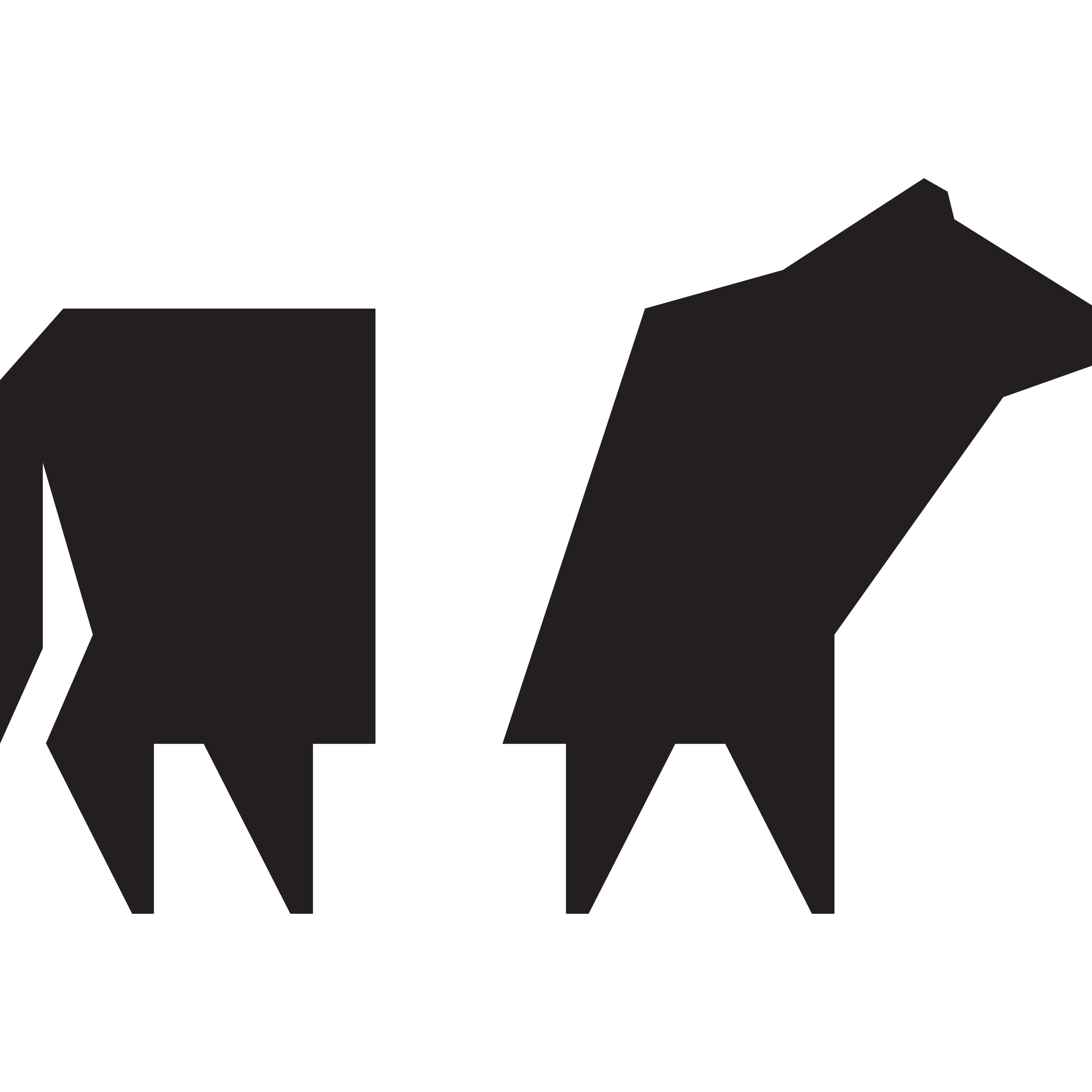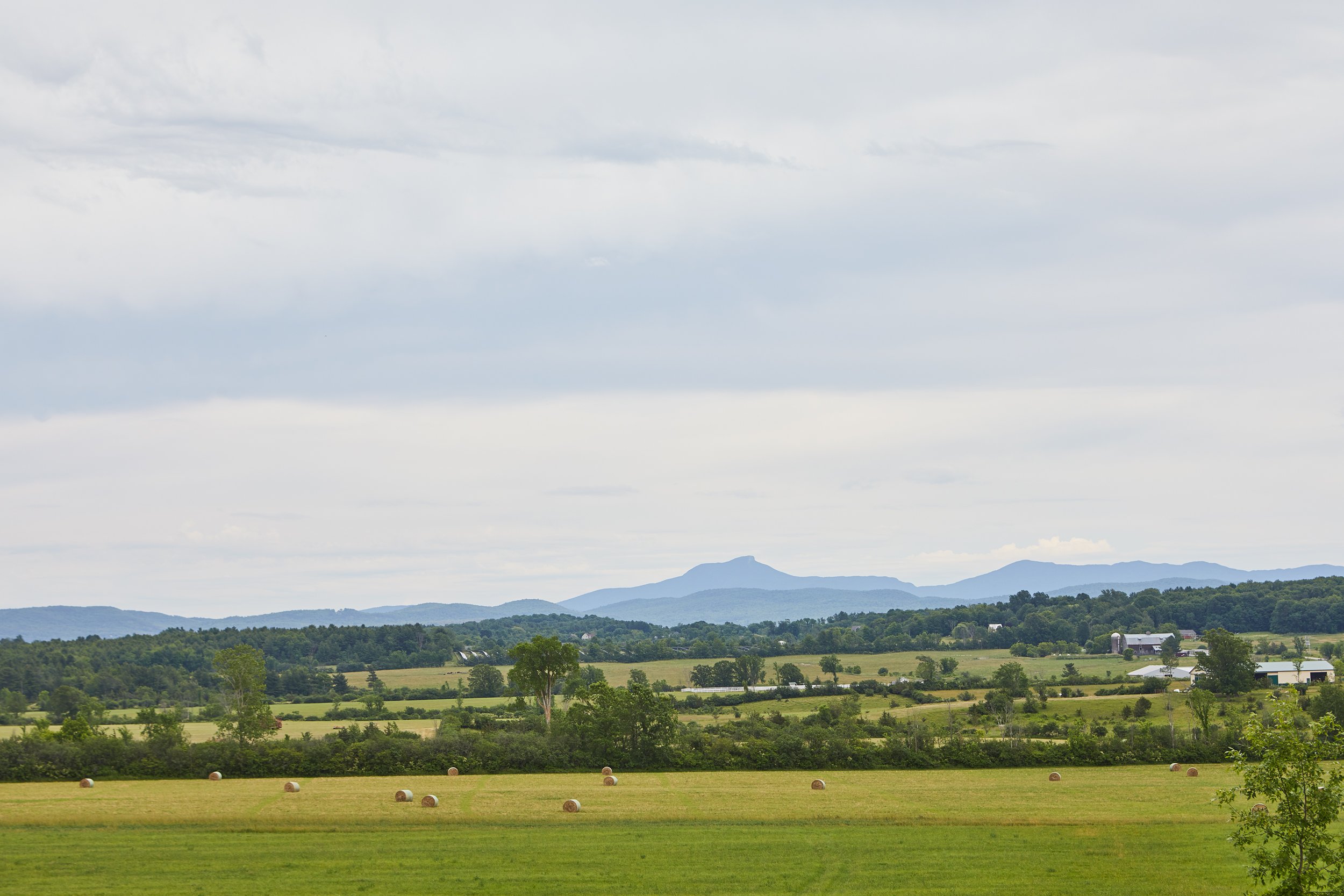Farm History
Philo Ridge Farm
We are a working farm located in the small town of Charlotte, in Vermont’s Champlain Valley. Using innovative, ecologically sustainable practices, we manage four hundred acres of healthy pasture land, forests and diversified produce gardens. We rotationally graze heritage breeds of livestock and grow certified organic fruits, vegetables, and flowers.
The core pillars of our regenerative agriculture system are building healthy soils, increasing water retention and purity, enhancing biodiversity and ecosystem resilience, and reducing carbon emissions through significant carbon sequestration. We practice rotational livestock grazing, use cover crops as part of our crop rotation, apply compost annually, plant native perennials, and continually explore more regenerative practices to foster the health of our land. We have also partnered with the University of Vermont to establish a research and evaluation protocol that can be used by other farms around the state to produce healthy soils.
Everything we do is rooted in our commitment to honoring our natural and human environments; we strive to produce and share nutrient-dense foods, provide an exciting learning environment for our visitors and staff, and strengthen our vibrant local community, all while honoring the integrity of the land.
Indigenous peoples begin stewarding the Champlain Valley in 9000 B.C.
Abenaki Couple, an 18th-century watercolor, artist unknown. Courtesy of the City of Montreal Records Management & Archives, Montreal, Canada
Our History
Philo Ridge Farm sits on land with an ancient agricultural legacy. The Williams family established the original farm here in 1840. In 1878, the Foote family purchased the farm and went on to operate it for six generations. Although much changed over the course of those generations, this land has remained the heart of this historically productive region.
Agricultural Roots
Indigenous peoples stewarded this area from as early as 9000 BC. By the time European settlement began in the 1600s, indigenous western Abenaki tribes were settled in villages throughout the valley. The western Abenaki had a diverse and rich food economy that included hunting, fishing, horticulture, and foraging. Hunters brought in moose, deer, and smaller local game using snares, traps, and bows and arrows. Walleye pike, black bass, and sturgeon were caught by canoe. The tribes cultivated multiple varieties of corn (maize), summer and winter squashes, and kidney, pinto, and navy beans near their villages, and they crafted elm baskets for collecting birch and maple saps for sugar. They also tended and gathered wild raspberries, blueberries, elderberries, hazelnuts, black walnuts, acorns, mushrooms, grapes, and medicinal plants throughout their territory. The Abenaki first came in contact with European settlers in the sixteenth century. As French and English colonialism expanded in the seventeenth century, the Abenaki population in Vermont, once 10,000 strong, was decimated by violence and disease.
Merino sheep (pictured) are introduced to Vermont in the 1810s and their wool becomes a major source of income for regional farmers. Today was graze a mixed breed of Romney and Border Leicester sheep known for beautiful wool and tender meat
The Rise of the Dairy Industry
In the fewer than thirty years between 1762, when the town of Charlotte was chartered, and 1791, when Vermont became the fourteenth state in the Union, the non-indigenous population of Vermont jumped from 300 to 85,000. Rapid settlement continued over the next century. Merino sheep were successfully introduced to Vermont in 1811, and their wool soon became a major source of income for regional farmers. In the late 1840s, wool prices fell and many Vermont farms transitioned to more lucrative dairy farming. Milk was made into cheese and butter and shipped by railroad to out-of-state markets. After the refrigerated railroad car was invented in 1910, Vermont began shipping fluid milk in large quantities to Boston and New York. On the back of this new distribution channel, the dairy farming industry grew to define the Vermont landscape.
In 1878 the Foote family purchases the farm and operates it for six generations as a dairy operation
When the Foote family purchased this land in 1878, they became part of Vermont’s dairy-farming history, founding a dairy operation that would span six generations. To honor this history, the Foote family placed a permanent conservation easement on most of their property in 1990, opting to donate the development rights for the land instead of selling them. The Vermont Land Trust, The Preservation Trust of Vermont, and The Freeman Foundation came together to provide financial support to preserve this iconic landscape forever. But faced with a steady decline in milk consumption, falling dairy prices, and a consolidating industry, the Foote farm, like so many small dairy farms, struggled to survive. In 2012, Jonathan and Linda Foote, the sixth generation of Foote farmers, made the difficult decision to sell the farm.
The Start of a New Farm Business
In 2012, after Peter and Diana purchased the farm, we began a three-year project of renovating the farm’s 1830s brick farmhouse and historic barns working with the Weather Hill Company
Diana McCargo and Peter Swift, longtime neighbors of the Foote family farm, bought the property with the dream of preserving its agricultural legacy. Not long after the couple began what would be a three-year project of renovating the farm’s 1830s brick farmhouse and historic barns, two young local farmers inquired about leasing pasture land. Soon the farmers were planting vegetables, fruits, and flowers on the farm while their small flock of sheep and broiler chickens grazed the fields. They began selling their meat and chickens direct-to-consumer and created a line of classic woven wool blankets that we still sell in the Market today. Watching the land and livestock flourish, Diana and Peter were inspired to continue expanding their vision for the future of the farm and its community.
That vision coalesced in 2015 under the name Philo Ridge Farm. Since then, this historic farm has continued to grow as a business and a family. In 2016, we welcomed our first herd of Belted Galloway cattle. In 2017, we began selling organic produce and pasture-raised meats and eggs at our farm stand. And in the summer of 2018, we transformed one of the farm’s restored historic barns into our kitchen and Market, a place for sharing delicious, farm-grown food and locally made products with our visitors.
As of December 10, 2023, Philo Ridge Farm has temporarily paused our public-facing food service operations, including the Market and our dining facilities as we transition the business into a nonprofit organization.
In 2018 the Farm Commons Barn opened which houses our Market and kitchen
Historic renovation and adaptive reuse was a core design element
Resources
“Abenaki,” Encyclopedia Britannica online, accessed October 15, 2020, https://www.britannica.com/topic/Abenaki
“Vermont,” Encyclopedia Britannica online, accessed October 15, 2020, https://www.britannica.com/place/Vermont
Charlotte, Vermont town website, accessed October 16, 2020, https://www.charlottevt.org/
“Agriculture in Vermont,” Saint Michael’s College website, accessed October 16, 2020, http://academics.smcvt.edu/vtgeographic/textbook/agriculture/agriculture_in_vermont.htm
“Central Vermont, Agriculture & Industry,” National Park Service website, accessed October 16, 2020, https://www.nps.gov/nr/travel/centralvermont/intro.htm
Johnson, Charles W. The Nature of Vermont: Introduction and Guide to a New England Environment. Hanover: University Press of New England, 1998.
Wiseman, Frederick Matthew. The Voice of the Dawn: An Autohistory of the Abenaki Nation. Hanover: University Press of New England, 2001.
Reade, Maria Buteux. “Philo Ridge Farm: The Power of Collaboration.” Edible Vermont, August 10, 2019. https://ediblevermont.ediblecommunities.com/eat/philo-ridge-farm











